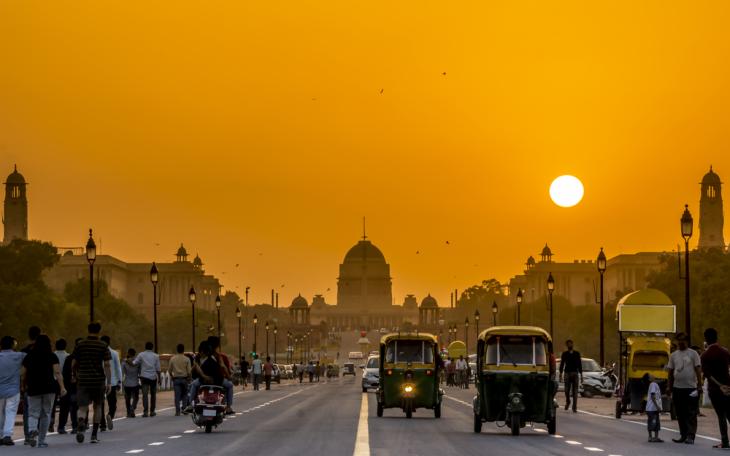India’s virus ‘tsunami’ and the perils of hubris

By Eva Rana
Throughout the collective (and continuing) global crisis of the past year, it was over last week that my own sense of emotional dissonance peaked. It was the visuals on my social media feed that did it – pub gardens and funeral pyres.
Emergence of a ‘double mutant’ strain of coronavirus (termed B.1.617) has confronted India with a near-vertical surge of new cases since the start of this month alone, combined with an average death rate of well over 2,000 per day. This too is a grossly underestimated figure, considering a glaring lack of reliable data. Officially, Covid-19 is only registered as cause of death for patients who die in hospital, which of course discounts the most vulnerable populations literally dying on the roads of India’s major cities – hauled by relatives from one hospital to the next, repeatedly turned away due to an acute shortage of beds, medical staff and (most crucially) oxygen supplies. Predictably, a black market has emerged out of which the majority of Indians are now completely priced out.
In February, I wrote about my reluctant optimism at the declining (or so it seemed) rate of cases in India with one crucial caveat – the challenging scope of its national inoculation programme. It was clear even then that the decline could not be attributed to the existence of a robust healthcare infrastructure. There was also a misplaced sense that Indians had successfully achieved herd immunity (now where have we heard that before…)
It would appear that such hubris led the government towards more or less abandoning attempts at consolidating domestic capacity. India’s Covid-19 taskforce did not meet that month or in March, even as a ‘second wave’ seemed imminent. Instead, officials hailed India as the “pharmacy of the world” as they redirected efforts towards ‘vaccine diplomacy’ and jab exports. With several state elections coming up, it was as convenient a time as any for the incumbent BJP government to announce national “victory” over the virus. What better way to reconcile a precarious reality with wishful thinking than to indulge in irresponsible public messaging?
Star campaigner (and Prime Minister) Narendra Modi held a number of in-person election rallies across West Bengal where he self-consciously chose not to sport a mask, as he marvelled at the number of non-socially distanced supporters in attendance as proof of the BJP’s near-universal popularity. This was coupled with an active promotion of religious mass gatherings (and I do mean cricket matches) as entirely aligned with safety guidelines. It would now be dishonest to describe them as anything short of ‘super-spreader’ events.
Some have chosen to blame the blasé attitudes of India’s upper middle-class for the recent surge. But I’m afraid this obscures the likelihood that public behaviour is highly responsive to signals from a largely popular government. Others blame the United States’ initial stifling of key raw material for production of India’s Covishield vaccine. It remains in our collective interest that the international community does all it can to curb new variants, so it is reassuring that a number of countries (including the UK) have since pledged support in the form of key supplies. But no singular effort will be enough unless efficiently integrated across the government machinery to make up for time lost in the sophistry of such attempts as legally requesting Twitter to withhold certain posts criticising the party’s mishandling of the pandemic.
Doomscrolling from outside the Indian jurisdiction, I could still view those tweets – desperate pleas for any leads on medication or oxygen supplies for critically-ill friends and family. In a jarring contradiction, this was sprinkled with targeted ads from London restaurants now emerging from lockdown restrictions in the UK. For a while I expect I will continue to sigh with relief at each successful phase of reopening until June… and simultaneously catch myself cringe.









